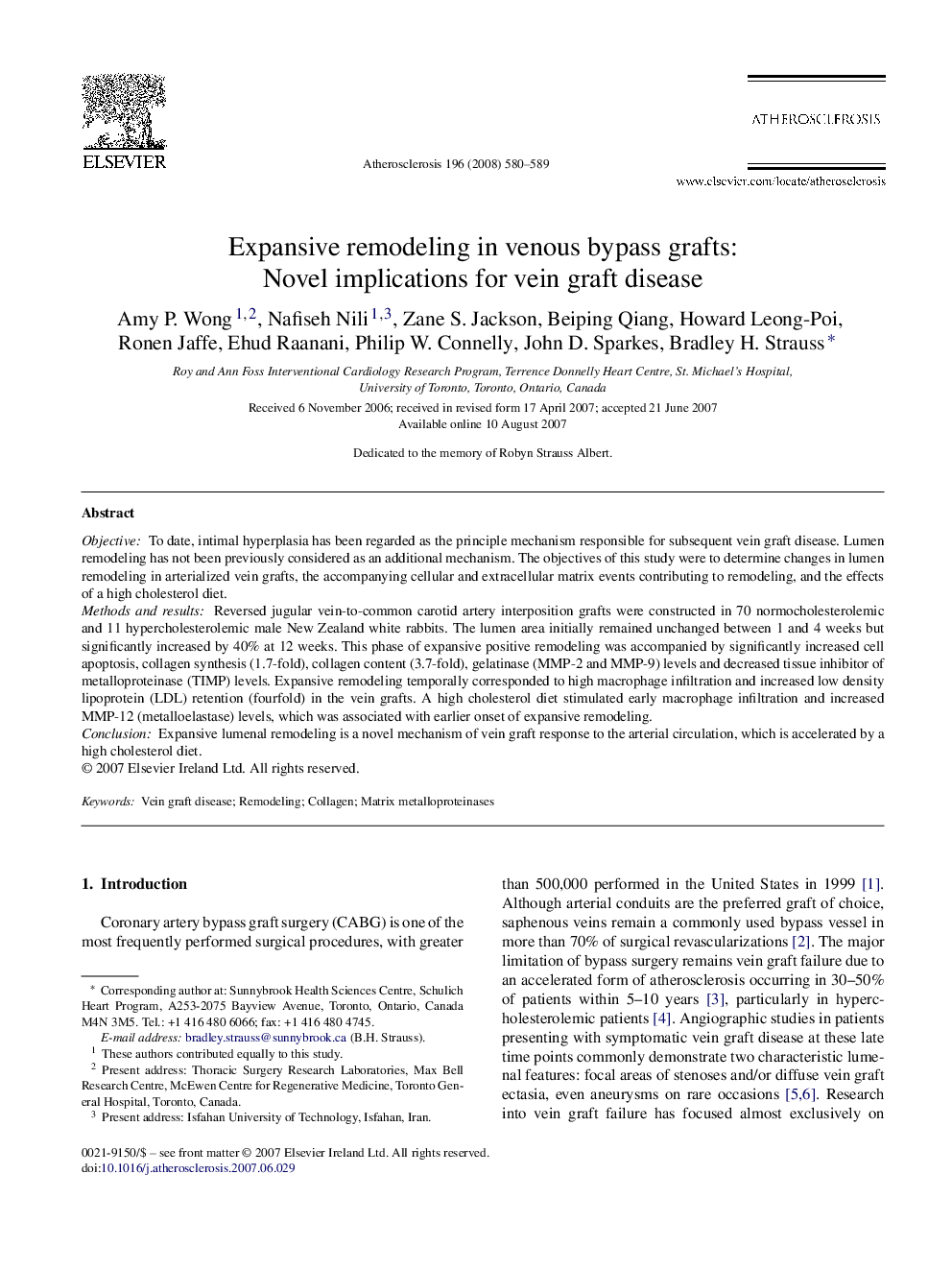| Article ID | Journal | Published Year | Pages | File Type |
|---|---|---|---|---|
| 2894024 | Atherosclerosis | 2008 | 10 Pages |
ObjectiveTo date, intimal hyperplasia has been regarded as the principle mechanism responsible for subsequent vein graft disease. Lumen remodeling has not been previously considered as an additional mechanism. The objectives of this study were to determine changes in lumen remodeling in arterialized vein grafts, the accompanying cellular and extracellular matrix events contributing to remodeling, and the effects of a high cholesterol diet.Methods and resultsReversed jugular vein-to-common carotid artery interposition grafts were constructed in 70 normocholesterolemic and 11 hypercholesterolemic male New Zealand white rabbits. The lumen area initially remained unchanged between 1 and 4 weeks but significantly increased by 40% at 12 weeks. This phase of expansive positive remodeling was accompanied by significantly increased cell apoptosis, collagen synthesis (1.7-fold), collagen content (3.7-fold), gelatinase (MMP-2 and MMP-9) levels and decreased tissue inhibitor of metalloproteinase (TIMP) levels. Expansive remodeling temporally corresponded to high macrophage infiltration and increased low density lipoprotein (LDL) retention (fourfold) in the vein grafts. A high cholesterol diet stimulated early macrophage infiltration and increased MMP-12 (metalloelastase) levels, which was associated with earlier onset of expansive remodeling.ConclusionExpansive lumenal remodeling is a novel mechanism of vein graft response to the arterial circulation, which is accelerated by a high cholesterol diet.
